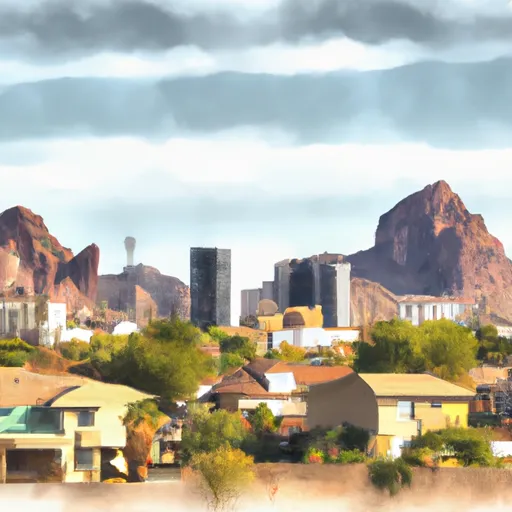-
 Snoflo Premium
Snoflo Premium
Get unlimited access to all our content
With no Ad interruptions! - Start Your Free Trial Login with existing account
San-Carlos
Eden Index
Climate
9.2
•
Recreation
•
Community
•
Safeguard
3.7/10

San Carlos, Arizona is located in the southeastern part of the state and is situated within the San Carlos Apache Indian Reservation. The climate in San Carlos is characterized by hot summers and mild winters. Summers bring high temperatures averaging in the mid to upper 90s Fahrenheit, while winters see average temperatures ranging from the low 40s to mid-60s Fahrenheit.
The hydrology constituents in the region are primarily shaped by the San Carlos Lake, which is a reservoir formed by the damming of the Gila River. The lake offers various recreational opportunities, including fishing for species like bass, crappie, and catfish. Water sports, such as boating, water skiing, and swimming, are also popular activities.
Additionally, San Carlos boasts beautiful natural landscapes that provide ample outdoor recreation opportunities. Hikers and nature enthusiasts can explore the picturesque mountain ranges and canyons that surround the area, including the Pinal Mountains and the San Carlos Apache Reservation. These landscapes offer opportunities for hiking, camping, wildlife viewing, and photography. The region's diverse flora and fauna make it an ideal destination for outdoor enthusiasts seeking to immerse themselves in nature's beauty.
What is the Eden Index?
The Snoflo Eden Index serves as a comprehensive rating system for regions, evaluating their desirability through a holistic assessment of climate health, outdoor recreation opportunities, and natural disaster risk, acknowledging the profound impact of these factors on livability and well-being.
Climate Health Indicator (CHI): 9.2
San-Carlos receives approximately
469mm of rain per year,
with humidity levels near 46%
and air temperatures averaging around
14°C.
San-Carlos has a plant hardyness factor of
8, meaning
plants and agriculture in this region tend to thrive here all year round.
By considering the ideal temperature range, reliable water supplies, clean air, and stable seasonal rain or snowpacks, the Climate Health Indicator (CHI) underscores the significance of a healthy climate as the foundation for quality living.
A healthy climate is paramount for ensuring a high quality of life and livability in a region, fostering both physical well-being and environmental harmony. This can be characterized by ideal temperatures, reliable access to water supplies, clean air, and consistent seasonal rain or snowpacks.
Weather Forecast
Streamflow Conditions
Upper Gila
Area Rivers
Upper Gila
Snowpack Depths
Upper Gila
Reservoir Storage Capacity
Upper Gila
Groundwater Levels
Recreational Opportunity Index (ROI):
The Recreational Opportunity Index (ROI) recognizes the value of outdoor recreational options, such as parks, hiking trails, camping sites, and fishing spots, while acknowledging that climate plays a pivotal role in ensuring the comfort and consistency of these experiences.
Access to outdoor recreational opportunities, encompassing activities such as parks, hiking, camping, and fishing, is crucial for overall well-being, and the climate plays a pivotal role in enabling and enhancing these experiences, ensuring that individuals can engage in nature-based activities comfortably and consistently.
Nearby Ski Areas
Catastrophe Safeguard Index (CSI):
The Catastrophe Safeguard Index (CSI) recognizes that natural disaster risk, encompassing floods, fires, hurricanes, and tornadoes, can drastically affect safety and the overall appeal of an area.
The level of natural disaster risk in a region significantly affects safety and the overall livability, with climate change amplifying these risks by potentially increasing the frequency and intensity of events like floods, fires, hurricanes, and tornadoes, thereby posing substantial challenges to community resilience and well-being.
Community Resilience Indicator (CRI):
The Community Resilience Indicator (CRI) recognizes that education, healthcare, and socioeconomics are crucial to the well-being of a region. The CRI acknowledges the profound impact of these elements on residents' overall quality of life. By evaluating educational resources, healthcare accessibility, and economic inclusivity, the index captures the essential aspects that contribute to a thriving community, fostering resident satisfaction, equity, and social cohesion.

